Locks, A Brief History
According to All Padlocks, the Romans were first to come up with padlocks around 500 BC, proving that man has always had an issue with theft. These early locks were iron and had bolts that required keys to open. Chinese merchants spread this new technology across the known world over the next few centuries. Eventually the Europeans developed notches in the locks, which required correspondingly notched keys.
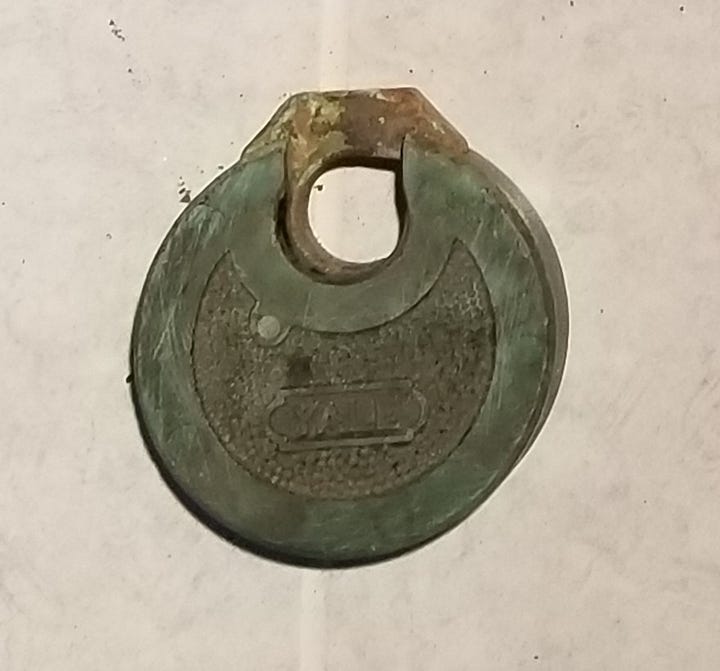
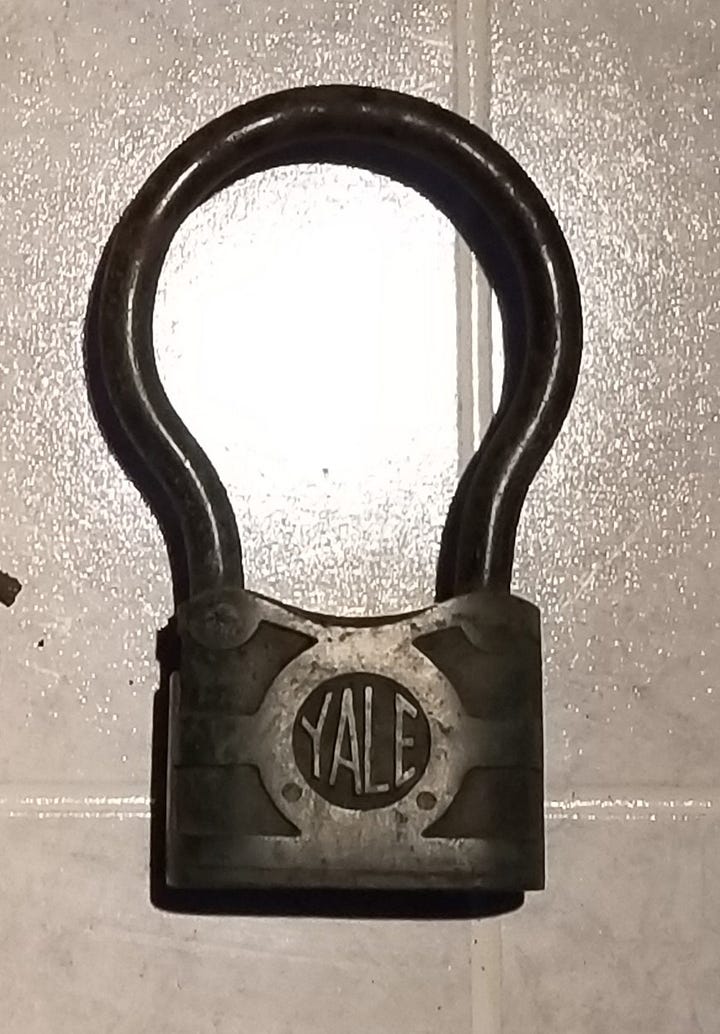
Among the most common lock companies in the world is the Yale Lock Co., which was established in 1868 in Stamford CT by Linus Yale. He is also credited with the development of pin tumbler locks some years previous in 1840, which are at the core of most modern locks. The two locks above are both Yales. The one on the left is a Model 1094 pancake lock (more on pancakes locks below), and most of these were used on the railroad. This one was probably not used on the railroad because it lacks their “property of” stamp.
ILCO (Independent Lock Co.) was founded in 1899 by three engineers, Peter Ostberg, Carl Neiglich, and Carl Boos. In 1928, the company was acquired by Yale and Towne, and now is primarily a manufacturer of top-quality key blanks, although they do still make locks. The lock below is an old Ilco.
National Lock Co. was founded in 1903 in Rockford, IL by three Swedish immigrants, Levin Faust, P. A. Peterson, and Frank Hogland. The two locks shown below are considered pancake locks, which are (unsurprisingly) flat, round locks.
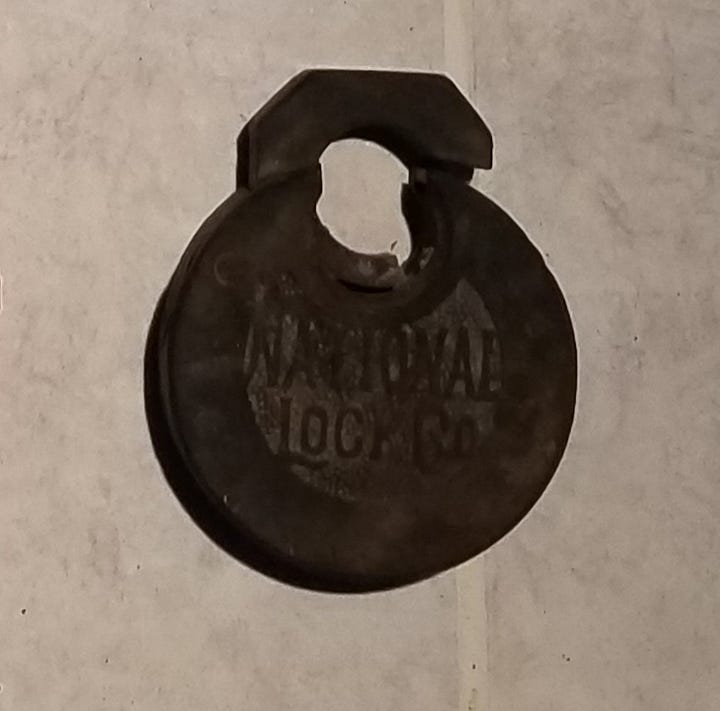
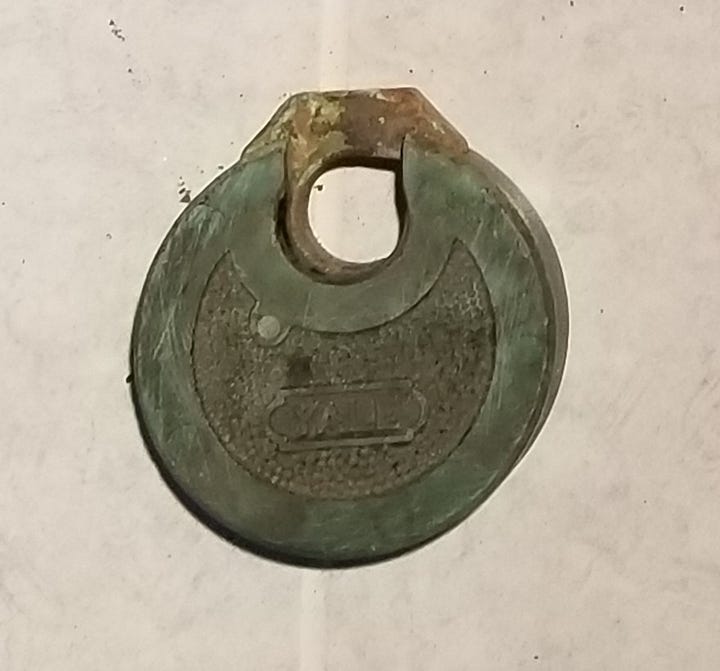
Push key six lever brass (pancake) locks use a push-lever system, which requires a flat piece of metal that has rectangular cuts on the end rather than on the sides of the blade. One of the Yale and the National are both this type of lock.
Cast iron locks are generally older than brass locks. Wood locks with iron innards are the oldest, but also the hardest to find as wood doesn’t have the longevity of metals. Prior to wood and iron, locks were relatively ineffective, and can’t be considered in the same class.
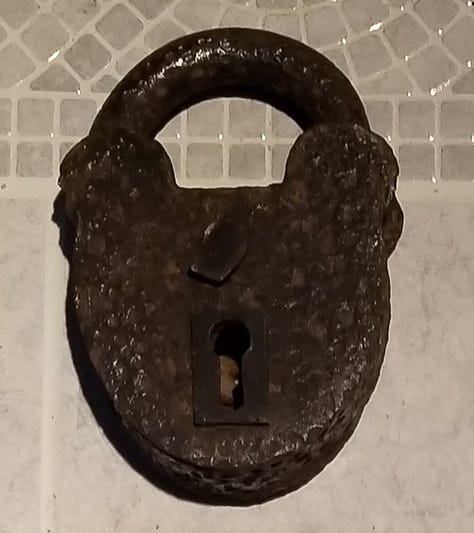

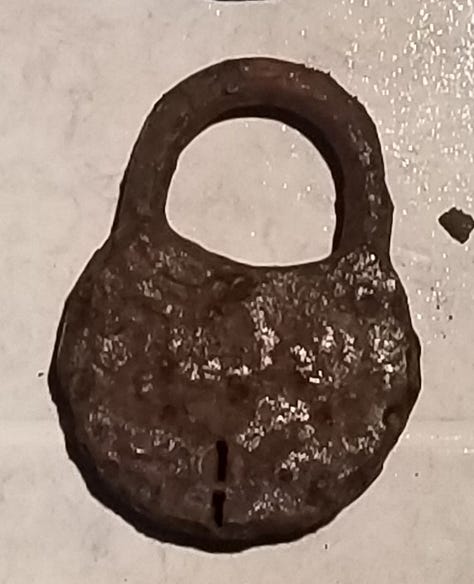
Dating old padlocks is relatively difficult, possibly because there are so many variations, and some styles were in use over many decades or even centuries. The materials used in the making of locks also overlapped quite a bit as innovation was slower to spread around the world prior to the modern industrial age.





